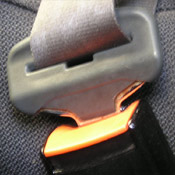Best 10 Methods to Save on Car Insurance in Kettering Ohio

Having to pay for overpriced car insurance can overdraw your checking account and put a big crunch on your finances. Comparison shopping is a great way to cut your insurance bill.
Lots of auto insurance companies contend for your business, and it can be difficult to compare rates to get the lowest rate
It’s a great practice to take a look at other company’s rates once or twice a year because rates are usually higher with each renewal. Even if you think you had the best rates six months ago you can probably find a better price now. So block out anything you think you know about car insurance because you’re about to learn the only way to lower your annual insurance bill.
Take these ten discounts and save
Companies don’t necessarily list every discount very well, so we researched some of the more common as well as the least known car insurance savings.
- Life Insurance – Companies who offer life insurance give lower rates if you buy auto and life insurance together.
- Pay Upfront and Save – By paying your policy upfront instead of monthly or quarterly installments you could save 5% or more.
- Early Switch Discount – Some companies give discounts for switching policies prior to your current policy expiration. It’s a savings of about 10%.
- Fewer Miles Equal More Savings – Keeping the miles down can qualify you for better rates on cars that stay parked.
- Paperless Signup – Certain companies will discount your bill up to fifty bucks for buying a policy and signing up over the internet.
- Accident Free – Drivers who don’t have accidents pay less compared to frequent claim filers.
- Military Discounts – Being deployed with a military unit may qualify for rate reductions.
- Seat Belts Save – Requiring all passengers to buckle their seat belts could save 15% on the medical payments or PIP coverage costs.
- Federal Employees – Employees or retirees of the government could cut as much as 10% off with select insurance companies.
- Passive Restraints – Vehicles with factory air bags can get savings up to 30%.
Keep in mind that many deductions do not apply the the whole policy. The majority will only reduce specific coverage prices like physical damage coverage or medical payments. So when the math indicates you would end up receiving a 100% discount, companies don’t profit that way.
To choose insurers with the best car insurance discounts in Ohio, click here.
Which policy gives me the best coverage?
When buying coverage, there really is not a one size fits all plan. Every situation is different so your insurance needs to address that. Here are some questions about coverages that might help in determining whether you might need an agent’s assistance.
- Am I covered if I crash into my own garage door?
- How high should my uninsured/underinsured coverage be in Ohio?
- Who is covered when they drive my vehicle?
- Will my rates increase for filing one claim?
- Do I get a pro-rated refund if I cancel my policy early?
- Can I still get insurance after a DUI?
- What if I total my vehicle and owe more than it’s worth?
- Do I have coverage when using my vehicle for my home business?
- Do I pay less if my vehicle is kept in my garage?
- Does medical payments coverage apply to all occupants?
If you’re not sure about those questions but you think they might apply to your situation then you might want to talk to an insurance agent. To find lower rates from a local agent, complete this form or go to this page to view a list of companies.
More detailed Ohio car insurance information is located at the Ohio Department of Insurance website. Ohio drivers can read industry bulletins, read state legal mandates and laws, and find out industry alerts.
These articles may also be worth reading.
The coverage is in the details
Having a good grasp of a car insurance policy can help you determine the best coverages for your vehicles. Policy terminology can be confusing and even agents have difficulty translating policy wording. Below you’ll find typical coverage types available from car insurance companies.
Med pay and Personal Injury Protection (PIP)
Medical payments and Personal Injury Protection insurance provide coverage for bills for pain medications, chiropractic care, funeral costs and hospital visits. The coverages can be used to cover expenses not covered by your health insurance policy or if you do not have health coverage. Coverage applies to both the driver and occupants as well as any family member struck as a pedestrian. PIP is only offered in select states but can be used in place of medical payments coverage
Auto liability insurance
This coverage provides protection from damage or injury you incur to other’s property or people. It protects YOU from legal claims by others. Liability doesn’t cover damage sustained by your vehicle in an accident.
Liability coverage has three limits: per person bodily injury, per accident bodily injury, and a property damage limit. You commonly see values of 50/100/50 that translate to a limit of $50,000 per injured person, a limit of $100,000 in injury protection per accident, and $50,000 of coverage for damaged propery.
Liability coverage pays for claims like medical services, bail bonds, structural damage and repair costs for stationary objects. How much liability coverage do you need? That is up to you, but consider buying as large an amount as possible. Ohio state minimum liability requirements are 12,500/25,000/7,500 but drivers should carry better liability coverage.
Collision protection
Collision insurance pays for damage to your vehicle resulting from a collision with another car or object. You will need to pay your deductible then the remaining damage will be paid by your insurance company.
Collision coverage protects against things like rolling your car, sideswiping another vehicle, backing into a parked car and sustaining damage from a pot hole. Collision is rather expensive coverage, so you might think about dropping it from older vehicles. Drivers also have the option to bump up the deductible to get cheaper collision coverage.
Comprehensive insurance
Comprehensive insurance coverage pays to fix your vehicle from damage caused by mother nature, theft, vandalism and other events. You need to pay your deductible first and the remainder of the damage will be paid by comprehensive coverage.
Comprehensive coverage pays for things like a tree branch falling on your vehicle, hitting a bird, damage from a tornado or hurricane and vandalism. The highest amount you can receive from a comprehensive claim is the actual cash value, so if it’s not worth much more than your deductible it’s not worth carrying full coverage.
Uninsured/Underinsured Motorist (UM/UIM)
Your UM/UIM coverage provides protection from other drivers when they do not carry enough liability coverage. Covered claims include injuries sustained by your vehicle’s occupants as well as damage to your vehicle.
Because many people carry very low liability coverage limits (12,500/25/7,500), their limits can quickly be used up. For this reason, having high UM/UIM coverages is a good idea.
In Summary
Cheaper car insurance is available on the web and with local Kettering insurance agents, and you should compare price quotes from both so you have a total pricing picture. A few companies do not offer online quoting and many times these smaller companies only sell through independent insurance agents.
When you buy insurance online, don’t be tempted to reduce coverage to reduce premium. There have been many cases where consumers will sacrifice liability coverage limits only to find out that their decision to reduce coverage ended up costing them more. Your focus should be to get the best coverage possible for the lowest price while still protecting your assets.
In this article, we covered a lot of techniques to shop for car insurance online. The key thing to remember is the more times you quote, the better chance you’ll have of finding lower rates. You may be surprised to find that the biggest savings come from some of the lesser-known companies. These companies may cover specific market segments cheaper than the large multi-state companies such as Allstate or State Farm.

